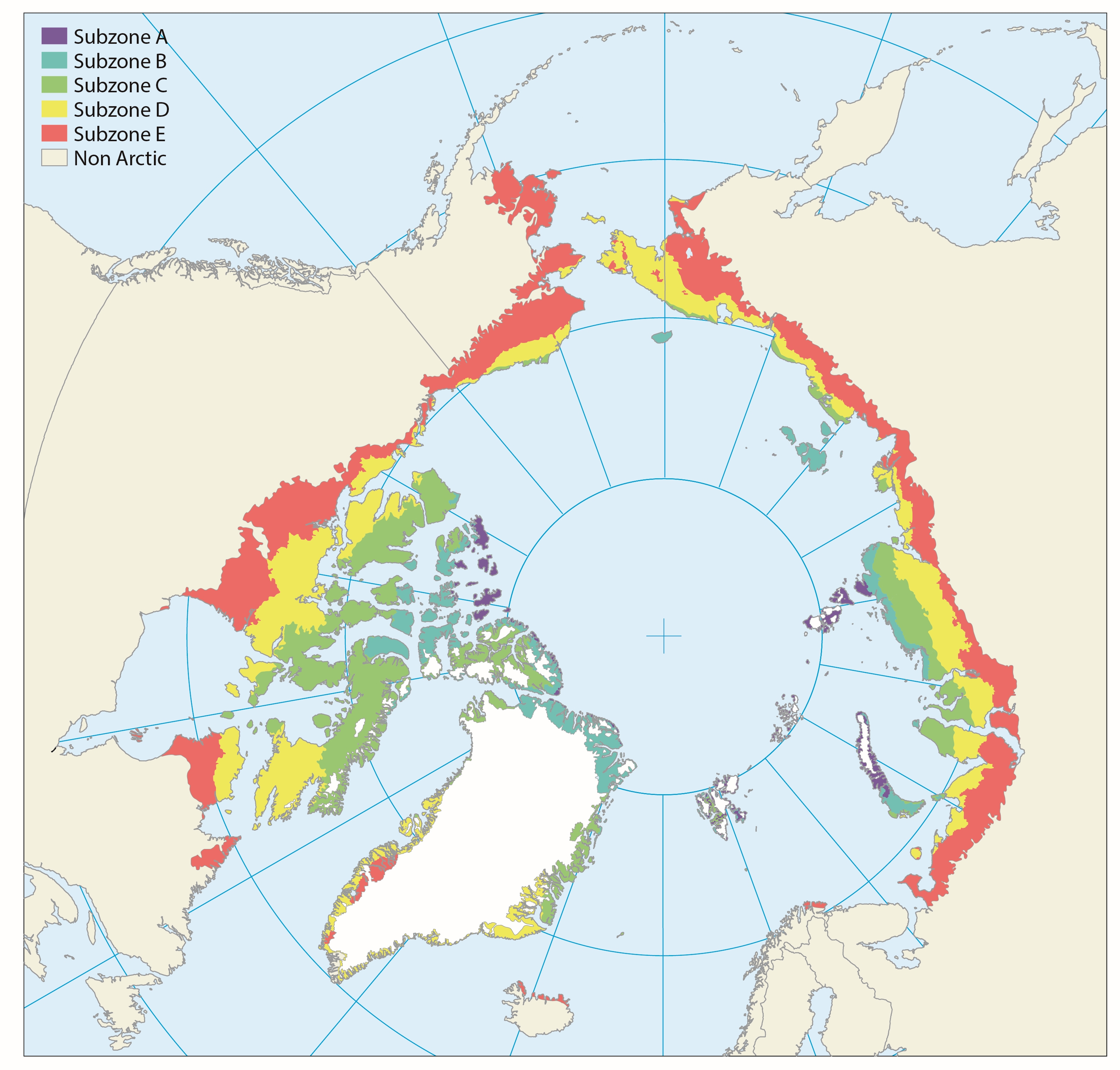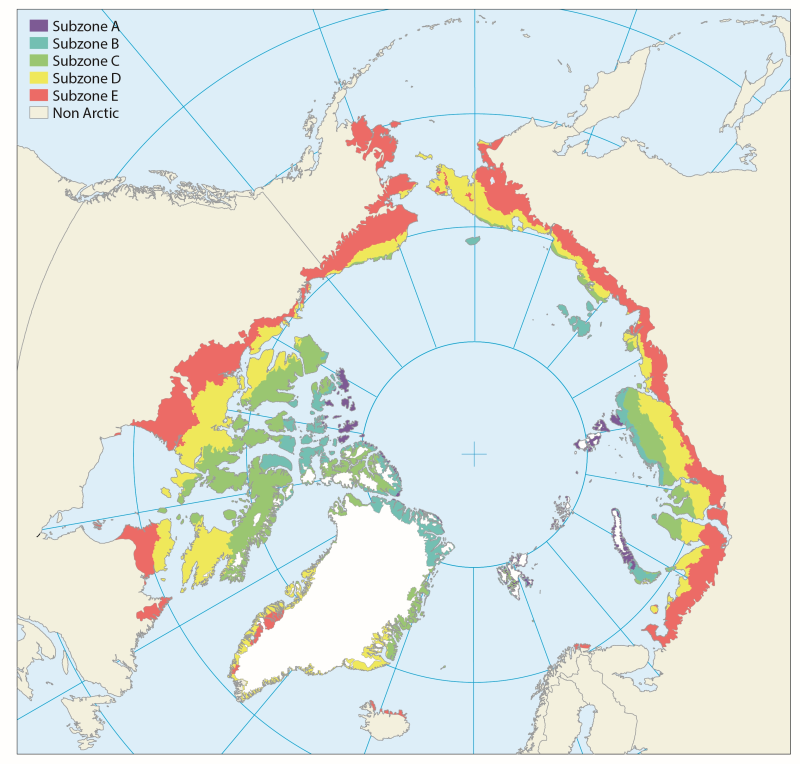Bioclimatic
Type of resources
Available actions
Topics
Keywords
Contact for the resource
Provided by
Formats
Representation types
Update frequencies
status
-

The Arctic territory is roughly subdivided along two main axes in latitudinal subzones (Fig. 9.1) and longitudinal floristic provinces (Fig. 9.2). The latitudinal northsouth axis mainly reflects the present climate gradient divided into five different subzones, which are separated according to climate and vegetation in the lowlands of each zone. Published in the Arctic Biodiversity Assessment, Chapter 9 - released in 2013
-

Based on published scientific literature, the diversity of plants in the Arctic is reviewed. The plants are divided into three main groups according to essential differences in anatomy, morphology and reproduction. These are vascular plants, bryophytes (mosses and liverworts) and algae (micro- and macroalgae). As a whole, these three plant groups have the ability to perform photosynthesis. As primary producers they play a key role in the environment, since photosynthesis provides resources for all other organisms. Vascular plants and bryophytes (together with the lichenized fungi, the lichens) are the main structural components of terrestrial vegetation and ecosystems, while algae are more abundant in fresh water and marine ecosystems. Conservation of Arctic Flora and Fauna, CAFF 2013 - Akureyri . Arctic Biodiversity Assessment. Status and Trends in Arctic biodiversity. - Plants (Chapter 9)
-

The ecological classification of Quebec territory consists of mapping and describing ecological units in a system with nine levels of perception between the continental and landscape scales. It presents the diversity of terrestrial ecosystems in all of Quebec taking into account both the characteristics of the vegetation (physiognomy, structure and composition) and the physical environment (relief, geology, geomorphology, hydrography). The nine levels that compose it are: the vegetation zone and sub-zone at the continental scale (1,000,000 km2), the bioclimatic domain and sub-domain at the national level (100,000 km2), the ecological region and subregion at the regional scale (10,000 km2) and the regional landscape unit, the ecological district and the vegetation stage at the landscape scale (10,000 km2) and the regional landscape unit, the ecological district and the vegetation stage at the landscape scale (100 to 1,000 km2).**This third party metadata element was translated using an automated translation tool (Amazon Translate).**
 Arctic SDI catalogue
Arctic SDI catalogue